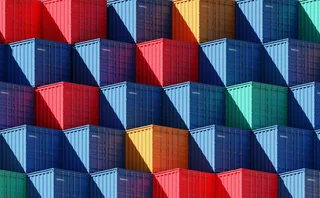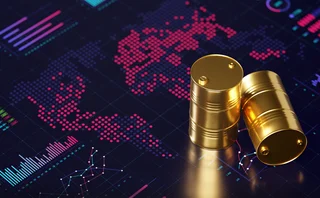
Natural gas/LNG house of the year: ENGIE
Energy Risk Awards 2023: French utility secures physical gas supplies for Europe and offers long-term hedges

The past 18 months have transformed the world’s natural gas markets. The war in Ukraine led to Europe reducing the share of its gas imported from Russia to 16% by the end of last year, down from 37% in March 2022. This prompted a scramble for new sources of gas, massive investment in liquified natural gas (LNG) infrastructure, and changing pricing dynamics from Texas to Tokyo. Throughout this market turmoil, French utility ENGIE played a central role in keeping supplies flowing and helping clients manage unprecedented conditions.
“Despite facing an extraordinary crisis, our teams adapted very quickly to the sudden, structural shift resulting from the Ukraine conflict,” says Sébastien Delannoy, head of gas assets at ENGIE Global Energy Management & Sales. “The only responsible choice was to give equal priority to the critical imperatives of security of supply, filling storage and decarbonisation.”
Skyrocketing natural gas prices in Europe following the Russian invasion and concerns about adequate storage for winter 2022–23 put a premium on expanding supplies from key producers in the region.
“We were able to source around 193 terawatt hours (TWh) of North Sea gas … using innovative, flexible deal structures with distinguishing add-ons to existing and new producer clients,” says Delannoy.
“Also instrumental in ensuring security of supply was the start of deliveries relating to two major long-term Azeri and Romanian Black Sea contracts for a total 3 billion cubic metres per annum, adding security and diversification to our portfolio in [a] shortage context and creating opportunities to further develop in southeast Europe.”
The US has also become a critical supplier of LNG to European markets.
“Thanks to our global reach and agility, we were able to strike a number of major deals last year to increase transatlantic supply, further securing supplies into Europe,” says Ralf Dickgreber, head of global LNG and biomass at ENGIE Global Energy Management & Sales.
Less than two weeks after the war broke out, the company concluded and increased its LNG sale-and-purchase agreement with Cheniere Energy, extending the long-term volumes to 2041 and more than doubling them to around 0.9 million tonnes per annum (Mtpa).
Only six weeks after executing the Cheniere extension, ENGIE closed a deal with NextDecade to buy 1.75 Mtpa of LNG from the Rio Grande LNG project from 2027 onwards. Later in the year, ENGIE also entered into a longer-term agreement, to buy 0.875 Mtpa for 15 years from Sempra Infrastructure, from the Port Arthur LNG greenfield project.
With these transactions, ENGIE has managed its security-of-supply objectives while remaining true to its raison d’etre, by focusing on long-term partners with a strong focus on environmental, social and governance issues.
Europe urgently needs greater LNG regasification capacity if it is to replace Russian gas. “Here, too, we played a key role,” says Dickgreber. “We leveraged our established presence on LNG terminals in France, while expanding our regasification capacities to the Netherlands and taking an active role in the deployment of a floating storage regasification unit (FSRU) in Germany.”
The company secured 30TWh/year for 16 years at France’s Fos-Cavaou terminal, and 10TWh/year for five years at the new Eemshaven FSRU in the Netherlands.
ENGIE also partnered with German utility E.ON and green hydrogen company Tree Energy Solutions to jointly develop Germany’s fifth FSRU import terminal, slated to begin operation in early 2024.
The FSRU will have the capacity to import around 5% of the natural gas used in Germany. The planned onshore project, where ENGIE is involved, will provide direct access to natural gas, hydrogen and carbon dioxide pipeline infrastructure.
ENGIE was also able to leverage what it describes as its “glocal” model – combining global co-ordination with local presence – to help clients manage the unprecedented moves in gas prices. “A focus on market-making, anticipating dramatic credit and liquidity situations, combined with prudent risk management, proved effective for ENGIE and our clients throughout 2022,” says Edouard Chevalier, head of risk management and supply – origination at ENGIE Global Energy Management & Sales.
For example, ENGIE was able to offer clients long-term hedges that took advantage of the steep backwardation in the natural gas curve. “As calendar 2022 prices spiked, our widespread coverage enabled us to offer, for example, CAL22-CAL25 TTF contracts across European hubs, or wide TTF-Henry Hub spreads on CAL24-25, for LNG arbitrage,” he says.
“The global risk management framework we put in place enabled us to navigate safely through 2022,” Chevalier adds. “Our results illustrate the resilient nature of our business model and conduct.”
Only users who have a paid subscription or are part of a corporate subscription are able to print or copy content.
To access these options, along with all other subscription benefits, please contact info@risk.net or view our subscription options here: http://subscriptions.risk.net/subscribe
You are currently unable to print this content. Please contact info@risk.net to find out more.
You are currently unable to copy this content. Please contact info@risk.net to find out more.
Copyright Infopro Digital Limited. All rights reserved.
As outlined in our terms and conditions, https://www.infopro-digital.com/terms-and-conditions/subscriptions/ (point 2.4), printing is limited to a single copy.
If you would like to purchase additional rights please email info@risk.net
Copyright Infopro Digital Limited. All rights reserved.
You may share this content using our article tools. As outlined in our terms and conditions, https://www.infopro-digital.com/terms-and-conditions/subscriptions/ (clause 2.4), an Authorised User may only make one copy of the materials for their own personal use. You must also comply with the restrictions in clause 2.5.
If you would like to purchase additional rights please email info@risk.net
More on Commodities
Energy Risk Asia Awards 2024: The winners
Winning firms adapt to change with exemplary risk management skills
Foreign funds are bulls in China’s onshore commodity futures
Growing participation from overseas investors is boosting liquidity in what’s already a boom market
Energy Risk Software Rankings 2024: IT demands increase amid rising risk
Heightened geopolitical and credit risk increase requirements on commodities software
Energy Risk Asia Awards 2023: The winners
Winning firms demonstrate resilience and robust risk management amid testing times
ION Commodities: addressing the market’s recent pain points
Energy Risk Software Rankings winner’s interview: ION Commodities
Energy Risk Commodity Rankings 2023: adapting to new market dynamics
Winners of the 2023 Commodity Rankings provided reliability when clients faced extreme change
Energy Risk Software Rankings 2023: managing uncertainty
Unpredictable markets make CTRM software choices key
Navigating the volatility and complexity of commodity markets
Commodity markets have experienced significant challenges since the Covid-19 pandemic, the conflict in Ukraine and the subsequent sanctions imposed on Russia. These unprecedented events have caused fluctuations in supply and demand, disrupted global…








